Mastering Influencer Payments: Trends, Challenges, and Best Practices for 2024
After bouncing around tech start-ups and university literature programs, Joe has finally settled down as Billo’s Head of Content. Joe now spends his days writing ads about ads, teaching clients how to craft killer content, and combing through our web copy with a bold red Sharpie.
After a five-year stint in corporate marketing in California, Lucas decided to hang up the suit and tie for a more relaxed setting. He moved to Barcelona to get his MBA and enjoy the Mediterranean lifestyle. After spending 15 months in Europe, Lucas moved back home to Reno, Nevada where he started his own digital marketing company, StratMark. When he is not working, Lucas is out skiing, rock climbing, mountain biking, and just enjoying the outdoors.

inMarketing has transformed, shifting from traditional to digital methods. This has altered how brands engage with their audience. Social media led this transformation, emphasizing influencer marketing.
Influencer marketing thrives on word-of-mouth advertising, adapting well to the digital era. Valued at $21.1 billion, it’s a stable force in modern digital marketing.
Consumers now distrust traditional ads, turning to trusted voices – influencers. These range from celebrities to community leaders, offering authenticity and relatable content.
Their endorsements are potent tools for brands to target audiences authentically. Influencer marketing signals a move towards personalized marketing, emphasizing consumer trust and engagement.
The Appeal of Influencer Marketing
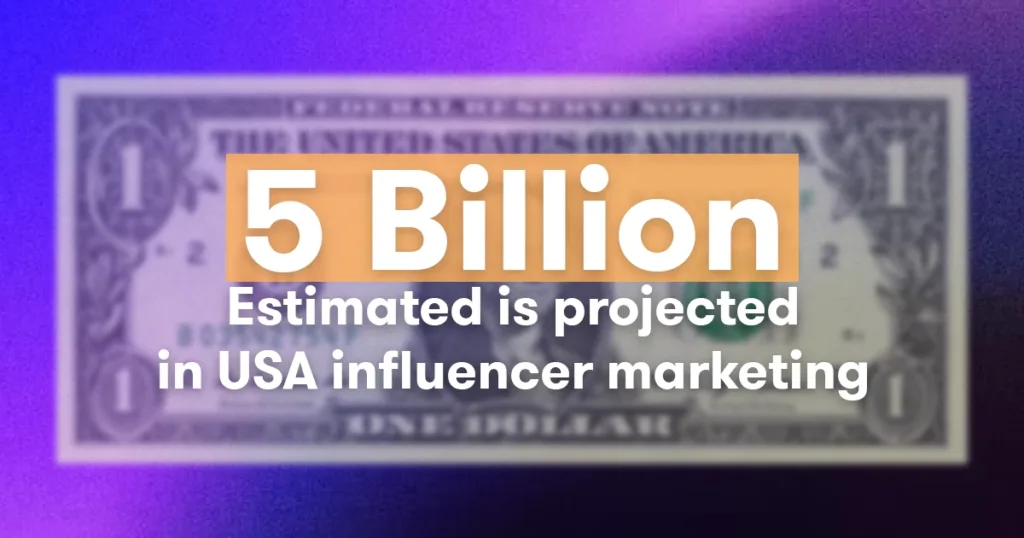
Today, consumers face endless ads. The personal touch and honesty of influencers matter a lot. Influencer marketing bridges the gap. It does so through relatable storytelling and genuine endorsements. It connects brands and consumers. This approach uses the trust and loyalty influencers have built with their followers. It contrasts sharply with the impersonal nature of traditional marketing.
Companies are increasingly allocating substantial portions of their marketing budgets to influencer campaigns. A recent industry report estimated that influencer marketing spending in the US alone is projected to exceed $5 billion in 2024.
- Word-of-mouth at Scale: Historically, word-of-mouth has been one of the most effective forms of marketing. Influencer marketing amplifies this concept, allowing personal recommendations to reach a global audience. 92% of consumers trust earned media. This includes recommendations from friends and family. They trust it more than all other types of advertising.
- The Human Connection: Influencers connect with people as individuals, not just as potential customers. They share personal experiences, insights, and recommendations. This makes their marketing messages feel more like advice from a friend. This personal connection is crucial in a digital age where consumers crave authenticity.
- Expertise and Trust: Influencers are often viewed as experts in their respective niches. Whether it’s fashion, gaming, beauty, or fitness, their opinions are valued by their audience. 63% of consumers trust influencer messages more than brand messages. This shows the importance of influencers’ expertise.
- Consumer Skepticism: Ad-blocking and skepticism hurt traditional ads. Influencer marketing offers a viable alternative. 47% of internet users worldwide use ad blockers. This creates a need for more engaging, authentic marketing.
- ROI of Influencer Marketing: Influencer marketing is not just popular; it’s effective. Businesses are making $6.50 for every $1 spent on influencer marketing. This impressive return on investment illustrates the financial appeal of leveraging influencer partnerships.
- Engagement Rates: Content from influencers can boost engagement rates by up to 8 times compared to brand-shared content. They excel at building personal bonds with their audience. Followers see them as peers and friends, not just creators, valuing their recommendations.
- Retention: The loyalty of an influencer’s following is a critical asset. A case study revealed that influencer-led campaigns can lead to a 5% higher retention rate compared to other marketing strategies.

Understanding Influencer Payments
Paying influencers is key to influencer marketing. It reflects the value exchange between brands and influencers. The nature of these payments has changed. They now offer various compensation models. These models are tailored to different campaign goals and influencer tiers.
The Evolution of Influencer Payments
Influencer marketing has changed a lot. It went from informal MySpace promotions to today’s big system. This change shows a big shift in how brands and influencers relate and how they get paid.
At first, influencers got informal rewards. They got product gifts or small payments for using their online followings. This laid the foundation for what would become a crucial marketing strategy.
The industry saw the value of influencer marketing. It then switched to formal payment structures. The need for clarity and professionalism drove this change. This change was driven by regulatory changes.
For example, the aim of the Federal Trade Commission’s (FTC) guidelines is to make sure things are clear. They also aim to protect consumers. They focus on endorsements and testimonials. It marked a big shift. They were towards more ethical and clear disclosure in influencer collaborations.
The shift to structured partnerships reflects the complexity of modern influencer marketing. It also demands adapting to diverse payment methods in Europe, ensuring smooth and compliant transactions across different markets. These partnerships include performance metrics, multi-platform engagements, and long-term collaborations.
These developments show a deeper appreciation for the unique value that influencers bring. It’s more than just reach—it’s about authenticity and engagement. Regulatory bodies have shaped these practices. They set standards for transparency and fairness. The standards uphold influencer marketing as a trusted strategy.
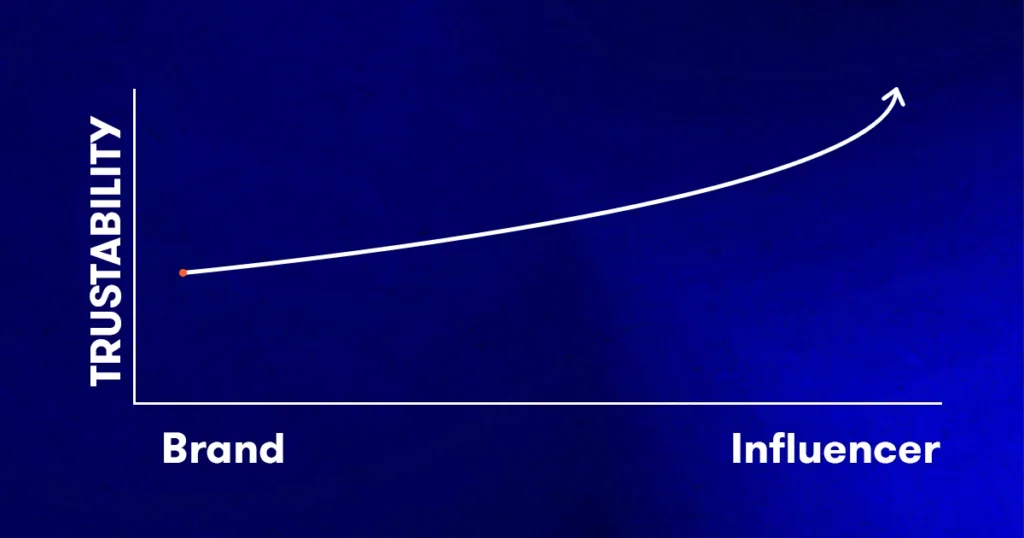
Forms of Compensation
Influencer pay mirrors the diversity of campaign goals, influencer preferences, and brand strategies. It has changed a lot since it began. Initially centered around product gifts or small payments, particularly popular among MySpace influencers. The approach has since broadened to include many payment types and revenue streams. It recognizes influencers as crucial to brand promotion.
Gifts and Rewards
An easy way to compensate influencers is by giving them products. It’s popular with all types of influencers, whether small or big. This works best when the product matches the influencer’s style. It attracts followers wanting to see trusted figures use products. It also helps in building long-term partnerships.
Comped Tickets and Trips
Giving influencers experiences, like event tickets or travel, benefits everyone. This strategy has evolved to use the influencers’ to create and share content during these experiences. This boosts promotion and adds aspiration and authority to the influencer’s persona.
Rebates and Store Credit
It is similar to gifting in targeting nano and micro-influencers. But, it offers a discreet way to avoid ad disclosure rules. However, it’s crucial to balance the requested work with fair pay. This balance keeps a positive relationship with the influencer. It’s especially key for large brands that must provide direct payments.
Content Licensing
Using user-generated content (UGC) for marketing is increasingly popular. This is due to its authenticity and engagement benefits. Brands pay influencers for the right to use their content in marketing. This includes websites and social media. The payment is a licensing fee or royalty. It’s based on how much the content is used and for how long.
Sponsored Posts and Pay-Per-Post
This direct payment model is the most common. Influencers are compensated per content piece. Rates vary widely and depend on factors like follower count, content type, and brand value. Even high-profile influencers with millions of followers may command rates upwards of $1 million per post, while nano and micro-influencers might charge between $10 to $100.
Performance-Based Payments
Influencers are compensated based on specific metrics like sales, bookings, or subscriptions driven by their content. This model benefits both parties by clearly aligning payment with tangible outcomes, often preferred for its trackability and effectiveness.
Fixed Rate and Bonus
It combines the certainty of pay-per-post with the incentivization of performance-based models. This approach gives influencers a base payment plus bonuses for hitting set targets. It balances upfront pay with rewards for great work. This boosts ROI while respecting the influencer’s effort.

Factors Affecting Payment Rates
Audience Size: Generally, influencers with larger followings command higher fees. Yet, engagement rates matter. Also, the audience’s relevance to the brand’s market can greatly influence rates.
Platform: The chosen social media platform affects payment rates. Platforms like Instagram and YouTube often command higher fees due to their wide reach and varied content.
Campaign Type: The type of campaign is crucial. It could be a single post, a series of posts, or an ongoing partnership. The type also determines payment structures.
Influencer Types, Payouts and Strategic Trends by Platform
In influencer marketing, the details of influencer pay vary by platform. Brands must understand this, as well as market trends and spending. These are key for using influencers well.
Categorization of Influencers by Follower Count
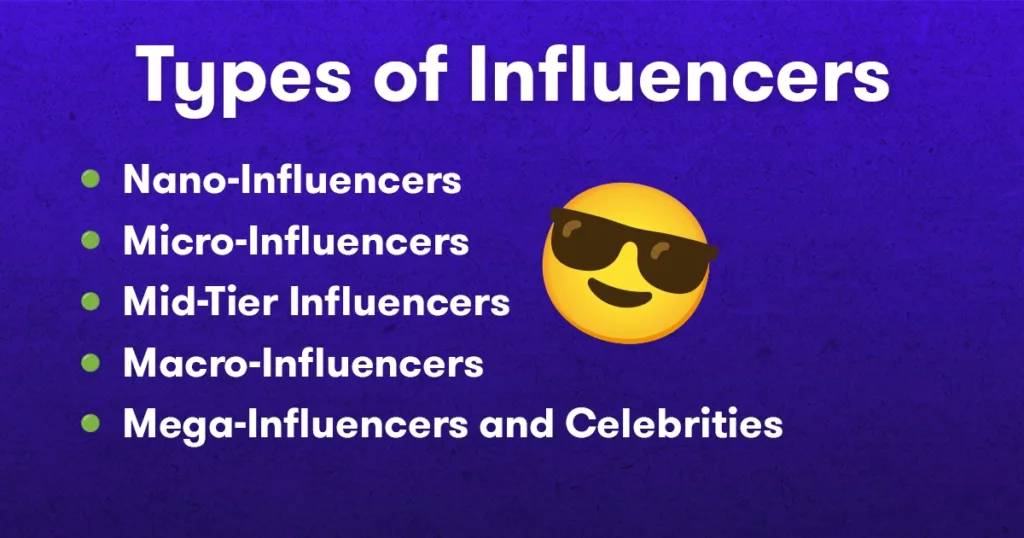
Nano-Influencers
Nano-influencers have a small but highly engaged following, typically between 1,000 to 10,000 followers. They are known for their close relationships with their audience, high engagement rates, and niche focus. Brands collaborate with nano-influencers for their authenticity and to target specific communities.
Micro-Influencers
Micro-influencers have followers ranging from 10,000 to 100,000. They strike a balance between a sizable audience and maintaining personal engagement with their followers. Micro-influencers are often considered experts in their specific niche, making them ideal for brands looking for targeted influence within a particular sector.
Mid-Tier Influencers
With followers between 100,000 to 500,000, mid-tier influencers have wider reach than micro-influencers and often enjoy higher engagement rates than larger influencers. They are perceived as more relatable by their audience and can be very effective in influencing purchase decisions.
Macro-Influencers
Macro-influencers have a following of 500,000 to 1 million. They offer a broad reach and are often professional bloggers, vloggers, or celebrities in a specific domain. While their engagement rates might be lower than those of micro or nano-influencers, their ability to reach a large audience makes them valuable for increasing brand awareness.
Mega-Influencers and Celebrities
This group includes influencers with over 1 million followers, often extending into tens of millions. Mega-influencers and celebrities have a vast reach but typically lower engagement rates compared to influencers with smaller followings. Brands leverage mega-influencers for their ability to reach a massive audience quickly, ideal for global brand awareness campaigns.
Categorization of Influencers by Type
Understanding the diverse types of influencers based on their content style, audience engagement, and platform preference is crucial for brands looking to forge meaningful collaborations.
Here are key influencer types, expanding on your provided examples:
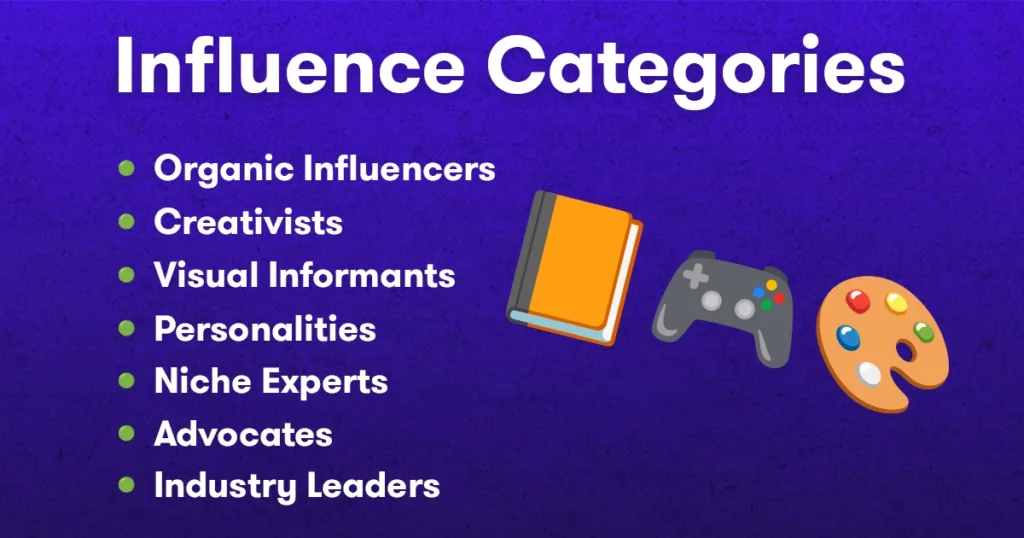
Organic Influencers
Organic influencers naturally champion your brand. They do this without any formal agreement or expectation of payment. Their follower count doesn’t matter. Their real enthusiasm and unpaid endorsements offer earned media. This makes them invaluable brand advocates. Their content feels natural and trustworthy, resonating deeply with their audience.
Creativists
Creativists are influencers with a strong artistic flair. Known for producing high-quality, visually captivating content. Their creative background lets them make innovative and engaging posts. Brands can use the posts on many media channels. Creativists seek pay for their work. They do so because it involves much effort and creativity.
Visual Informants
These influencers have built their following on their personal brand, achievements, and social networks. They are often celebrated for their celebrity, not for specific content. Visual informants can sway consumer perceptions and drive purchase decisions by associating products. This makes them potent allies for boosting brand visibility and appeal.
Personalities
Personality influencers share their daily lives and preferences with the public. This creates a reality TV-like experience on social media. They cover a wide range of content, from mundane daily activities to favorite products and lifestyle choices. Personalities can be integral to many marketing campaigns. They offer constant engagement with their followers. They are versatile in accepting payments.
Niche Experts
These are experts in specific fields. They use their knowledge and authority to influence their audience. Whether it’s fitness, cooking, technology, or finance, these influencers provide valuable insights, reviews, and tutorials, earning trust through their expertise. Their recommendations are highly regarded. They are ideal for detailed, informative campaigns in their niche.
Advocates
Influencers who are passionate about particular causes or issues and use their platform to raise awareness and advocate for change. They often cover social, environmental, or political themes. They connect with followers who share their values. Collaborations with advocates can help brands demonstrate their commitment to certain values or causes.
Industry Leaders
These are professionals at the top of their industries. They are founders of notable companies. They share insights into their success, industry trends, and business advice. Their influence is based on their professional achievements and thought leadership. Collaborations with these influencers can lend credibility and prestige to a brand, especially in B2B marketing.
Detailed Platform Analysis
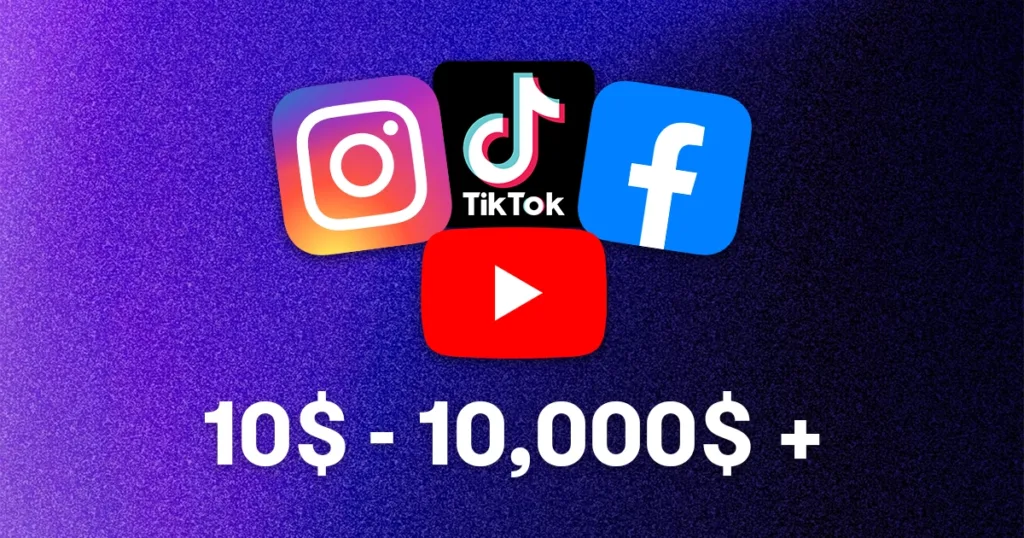
It is the top choice for influencer marketing. Instagram’s versatility with feed posts, Stories, and Reels appeals to a wide range of influencers. Spending on ads is significant. U.S. marketers are projected to spend over $1 billion on Instagram influencer marketing in 2024. Trends show video is becoming more popular. People like Reels in particular. Creators are paid to make them due to new monetization models.
Payment Rates
- Nano influencers $10-$100 per post
- Micro influencers $100-$500 per post
- Mid-tier influencers $500-$5,000 per post
- Macro influencers $5,000-$10,000 per post
- Mega influencers $10,000+ per post
TikTok
TikTok is a rising star in the influencer world. Its format encourages creative and engaging content that resonates with younger audiences. Spending on TikTok for influencer marketing has grown remarkably. It’s seen a 27.8% increase, which shows its expanding influence. In 2024, the platform is expected to draw $1.25 billion in U.S. influencer marketing spend. Trends show TikTok Shop’s potential for direct sales.
Payment Rates
- Nano influencers $800 per post
- Micro influencers $1,500 per post
- Mid-tier influencers $3,000 per post
- Macro influencers $5,000 per post
- Mega influencers $7,000+ per post
YouTube
YouTube is an established platform for long-form content. They engage deeply with their audiences. They do so through detailed reviews, vlogs, and educational content. In 2024, the U.S. will spend $1.07 billion on YouTube influencer content. The platform emphasizes Shorts and better livestreaming to offer more types of content.
Payment Rates: Typically higher, ranging from $500 for smaller creators to upwards of $20,000 for those with significant subscriber counts, reflecting the effort involved in video production. A good benchmark is around $20 per video per 1000 subscribers.
Emerging Platforms:
Facebook: Amidst evolving demographics, Facebook maintains its significance in the influencer marketing realm, with expenditures expected to hit the $1 billion mark. The platform’s extensive user base and well-established network offer a reliable environment for influencer campaigns. On average, influencers on Facebook may request about $25 per post for every 1,000 followers, translating to $250 for a following of 10,000. The pricing reflects Facebook’s lasting appeal for brand partnerships.
Snap (Snapchat): Although it captures a smaller slice of the influencer marketing pie than giants like Instagram, Snap’s influence is growing. Spending surpassed $40 million in 2023 and will grow this year. On Snapchat, influencers typically charge $10 per post per 1,000 followers. This underscores the platform’s potential for affordable, short-lived content campaigns. Adding features like Creator Collab Campaigns shows Snap’s commitment. They aim to improve collaboration between brands and creators.
X (formerly Twitter): In the wake of challenges and reduced ad revenues, X still presents unique opportunities for influencer marketing, albeit on a smaller scale. Influencers here tend to have the most accessible rates, averaging $2 per post for every 1,000 followers, making it an attractive option for brands seeking affordable avenues to disseminate their message. Despite its lower fees, X is real-time and conversational. It offers niche chances for engagement and brand promotion.
Blogs: Getting traffic through blogs is still potent. Influencers charge around $60 per post for every 1,000 unique visitors. This rate shows the value placed on detailed, long content. It can deeply engage and drive traffic to brand websites. Blog influencers have dedicated readerships and focused content areas. They are still a key part of full digital marketing strategies. They offer depth and authority that complement the fleeting nature of social media.
Importance of Customizing Payment Strategies
Customizing payment strategies is crucial for maximizing ROI in influencer marketing. Brands do this by aligning payments with the platform, influencer category, and campaign goals. This ensures that investments drive results. Influencer pay is intricate. It is influenced by platform nuances and market trends. So, it requires a calculated approach for good collaboration.
Understanding influencer categories and types is essential. From nano to mega influencers, organic advocates to niche experts, each brings unique strengths. Brands need a strategy that aligns payments with goals and engagement metrics, creating sustainable relationships and brand growth.
Automating Influencer Payments
Influencer payments are complex and diverse. This complexity has led to using fintech solutions. They automate and streamline payments. This automation brings several benefits, both for brands and influencers.
The Role of Fintech in Influencer Payments
Platforms like Billo offer automated payment solutions. They are made for the complexities of influencer marketing. These platforms can handle many payment methods, currencies, and compliance requirements. They reduce the admin work for marketing teams.
Benefits of Automation
- Efficiency: Automated systems cut the time and effort to process payments. They let brands focus on strategy and campaign optimization.
- Transparency: Automation provides clear records of payments, agreements, and tax documents. It enhances trust between brands and influencers.
- Scalability: Influencer marketing programs are growing. Automated payment systems can easily handle more influencers and transactions. They allow for expansion without adding much admin work.
Influencer vs Affiliate Marketing
Both influencer and affiliate marketing are crucial to digital marketing. But, they have different purposes and models.

Distinctions Between Influencer and Affiliate Marketing
Influencer Marketing: It mainly leverages the influencer’s credibility and audience engagement. This boosts brand visibility and reputation. Payment is often made upfront, based on agreed rates.
Affiliate Marketing: Affiliates are compensated based on sales or leads they generate. This is done through unique tracking links. This model directly ties compensation to measurable outcomes such as pay-per-click (PPC), pay-per-action, or pay-per-impression.
In a full digital marketing strategy, influencer and affiliate marketing can work well together. Influencer marketing builds brand awareness and trust. It creates fertile ground for affiliate marketing to drive sales. Using both approaches lets brands maximize their reach and ROI. They do so across the stages of the customer journey.
Looking Ahead
We are exploring the future of influencer payments. We are also looking at the changing bond between brands and influencers. Flexibility, transparency, and strategic alignment are still key to success. Technology and personalized pay will keep shaping the industry and ensure that influencer marketing stays key to digital marketing.
How Influencer Payments are Evolving
Influencer payments are becoming more complex. They they are more tailored and vital for strong brand-influencer relationships. This evolution is being driven by expectations and strategies for influencer compensation. This demands a forward-looking approach to stay competitive and effective as a brand.
Evolving Expectations and Strategies
Greater Personalization: The trend is towards more personalized payment agreements. They acknowledge the unique value each influencer brings to a campaign and understand that each influencer has a niche audience and specialized content. Payment models are beginning to reflect their impact. These models don’t just count their followers but include metrics such as retention and engagement.
Focus on Long-term Partnerships: There’s a growing recognition of the value of long-term influencer relationships. Both brands and influencers benefit from partnerships. These partnerships evolve and reward ongoing engagement and success.
Increased Use of Performance Metrics: Fixed payments remain common, but there’s a shift towards adding performance-based metrics to compensation. This could include bonuses for beating engagement targets, or a tiered pay system based on campaign results.
Partnership-based Approaches
The future of influencer payments lies in creating systems. These systems should foster real partnerships between brands and influencers. This means moving beyond transactions and developing strategies that fit mutual goals. Both parties must be invested in the success of the marketing.
Transparency and Fairness: These partnerships are committed to transparency and fair pay. Clear communication about payment terms, expectations, and performance metrics builds trust. It encourages influencers to fully invest in the brand’s success.
Technological Integration: Technology has begun to play crucial role in facilitating these partnerships. Many creator-centered platforms like Billo offer simple contract management, payment processing, and performance tracking.
The Critical Role of Timely Payments
Timely compensation remains a fundamental aspect of influencer marketing. Delays or uncertainties in payments can erode trust. They damage long-term relationships, showing the need for efficient, reliable payment systems.
Impact on Influencer Morale and Brand Reputation: Paying promptly shows a brand’s respect for the influencer’s work. It boosts morale and motivation. But payment issues can lead to public disputes. They harm a brand’s reputation in the influencer community and beyond.
The Need for Scalable Solutions: Brands are scaling their influencer marketing. This makes the need for scalable payment clear. Automated payment systems are crucial. They must manage payments efficiently, be scaleable, and not sacrifice speed or accuracy.
Common Influencer Payment FAQ
How much should brands pay influencers per post?
Influencer payment rates depend on many factors. These include follower count, platform, engagement rate, and content type. For instance, micro-influencers may charge from $100 to several hundred dollars per post. Celebrities or top-tier influencers could require thousands. Brands should consider the influencer’s reach and engagement. They should also consider the campaign’s expected ROI. These factors will help them set fair pay.
Are there standard rates for influencers across different social media platforms?
Rates vary by platform. This is because content creation and audience engagement have unique requirements on each one. For example, video content on YouTube may command higher rates. This is because making videos takes more effort than making photo posts on Instagram. There are no set rates. But, knowing average payment ranges for each platform can help in negotiating fair terms.
How do performance-based payments work?
Compensation is linked to specific campaign metrics. These metrics include engagement, click-through rates, and conversions. This model incentivizes influencers. It motivates them to make engaging content. It aligns their earnings with campaign success. These arrangements can work well. They are especially good for campaigns that aim to drive direct sales or actions.
What is the best way to pay international influencers?
For international payments, you need to use digital platforms. They offer good rates for converting currency and have low fees. Services like PayPal or Wise facilitate smooth cross-border payments. It’s essential to agree upfront on who will bear any transaction fees to avoid misunderstandings later on.
How often should influencers be paid?
Payment frequency is typically negotiated early in the partnership. Some influencers prefer immediate payment upon task completion. Others may be open to periodic payments (e.g., monthly or at the campaign’s end). Clear and agreed-upon payment schedules in the contract build trust. They ensure both sides can rely on each other.
Do influencers have to pay taxes on their earnings?
Yes, influencers are independent contractors. They must report their income and pay the taxes. Brands may need to issue tax forms. They are for payments over a certain amount, like Form 1099-MISC in the United States. The forms help influencers report taxes correctly.
Should brands include a contract for influencer partnerships?
Definitely. A detailed contract protects both parties, outlining deliverables, payment terms, and legal obligations. It should cover content ownership and usage rights. It should also cover compliance with disclosure regulations and other key terms. These terms prevent misunderstandings and ensure a successful collaboration.
How can brands ensure compliance with FTC guidelines on influencer partnerships?
Brands must ensure that influencers disclose sponsored content. They should use clear indicators like #ad or #sponsored. Giving influencers clear disclosure guidelines. Also, checking their content for compliance helps keep things transparent. It also helps us follow the rules.
Key Takeaways
Influencer marketing thrives on authenticity and personal connections. It’s a potent tool in digital marketing. Influencer payments vary, from fixed fees to performance-based models. These nuances show the industry’s dynamic nature. Moving forward, focus on recognizing each influencer’s unique value. Build lasting partnerships and use tech to streamline processes.
Staying informed and adaptable is crucial for brands and marketers. It’s key to navigating the evolving influencer payment landscape. Prioritizing fair, transparent, and timely compensation builds strong relationships. Companies can drive mutual success in a competitive digital world.
In the changing industry, platforms like Billo.app connect brands and influencers. They simplify collaboration and boost influencer marketing effectiveness. Brands using these tools keep their strategies strong and valuable.
The study of influencer payments shows how vital influencer marketing is. To succeed, brands need flexible strategies and tech-savvy partnerships. It’s crucial for brands to adapt to the evolving landscape.
Head of Content
After bouncing around tech start-ups and university literature programs, Joe has finally settled down as Billo’s Head of Content. Joe now spends his days writing ads about ads, teaching clients how to craft killer content, and combing through our web copy with a bold red Sharpie.

Authentic creator videos, powered by real performance data
22,000+ brands use Billo to turn UGC into high-ROAS video ads.
Top 20 TikTok Influencers for 2025
Having rapidly evolved from a short-form video app predominantly used [...]...
Read full articleInfluencer Marketing: Guide, Strategy, and Tips For Success
As the nature of online communication and consumption turns increasingly [...]...
Read full articleWhat is a Brand Ambassador: Guide and Marketing Strategy
The concept of brand ambassadors is thrown around a lot [...]...
Read full article



